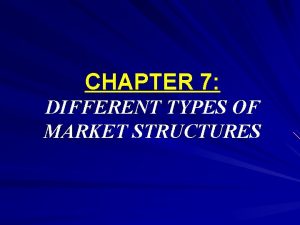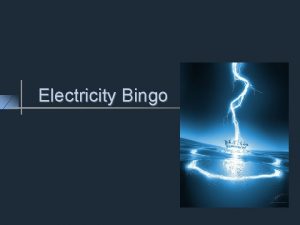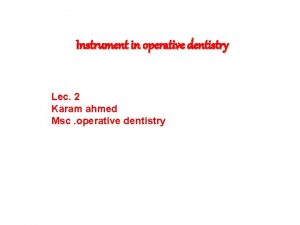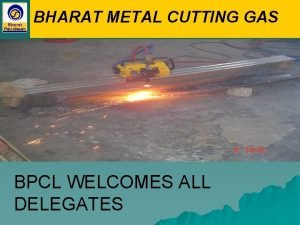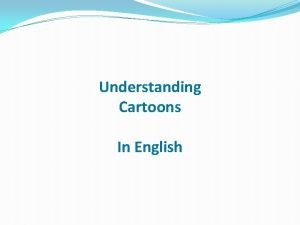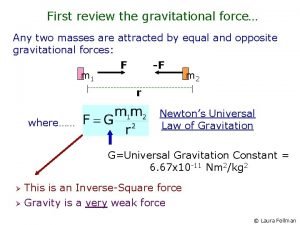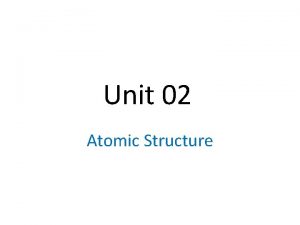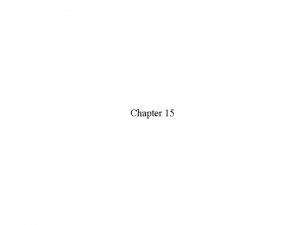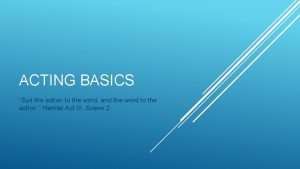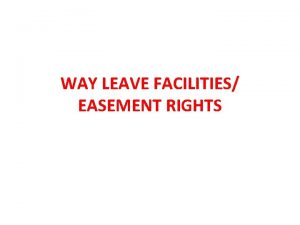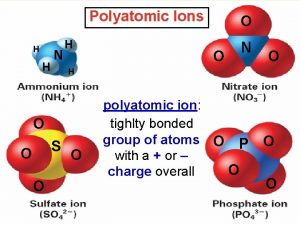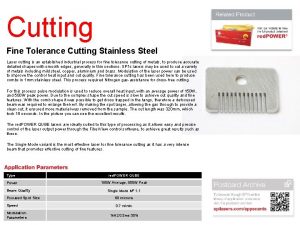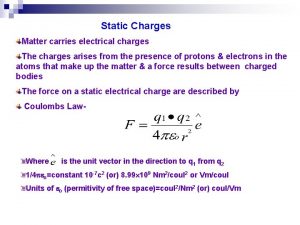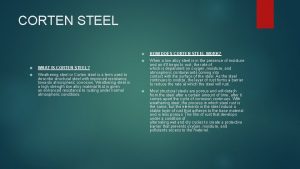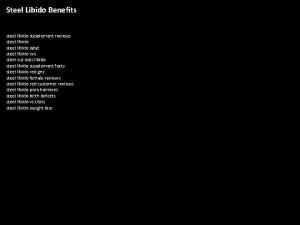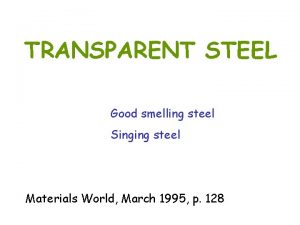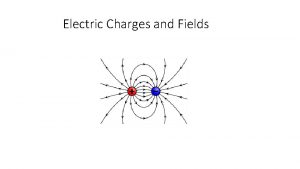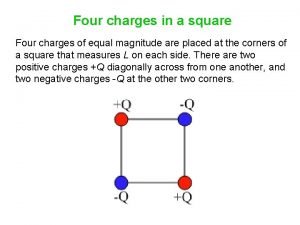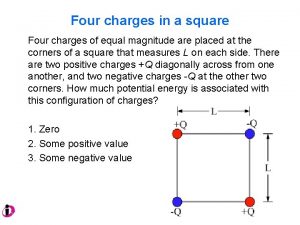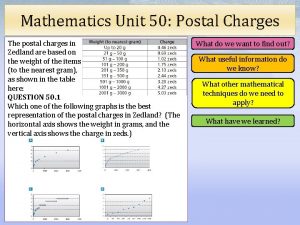STEEL CUTTING CHARGES ACTION Calculate and place steel















![HASTY SOLUTION # 1 Step 1 : Step 2 : [8” x 1/2”] [9” HASTY SOLUTION # 1 Step 1 : Step 2 : [8” x 1/2”] [9”](https://slidetodoc.com/presentation_image_h/f5e048e84782d2e9f6adf6bcf61095c2/image-16.jpg)















- Slides: 31


STEEL CUTTING CHARGES ACTION: Calculate and place steel cutting charges. CONDITONS: Given a 2 hour block of instruction, students handout, FM 5 - 250, and Demolition Card GTA 5 -10 -33. STANDARD: Students will correctly calculate and place steel cutting charges. SAFETY: Specific safety considerations will be discussed where appropriate throughout the lesson.

SPECIAL CONSIDERATIONS • Target Configuration – Structured Steel • Target Materials – High-Carbon Steel – Alloy Steel – Cast Iron • Type of Explosives • Size of Explosives Pg. 3 -10

PLACEMENT OF CHARGE Split the charge • Continuous • Contact • Width • Priming Charge is placed on the side of target Pg. 3 -11 Charge is split in half Placed opposite side of each other Offset the web thickness

BLOCK CHARGES P = 3/8 A P = pounds of TNT 3 / 8 = Constant A = area of cross section of target in square inches Pg. 3 -12

AREA OF CROSS SECTION Flanges Web

BLOCK CHARGE walk through Cut each I-Beams 1 time, using C-4 Flanges 16 x 1, Web 12 x. 5 5 Beams

BLOCK SOLUTION Step 1 : Step 2 : Step 3 : Step 4 : Step 5 : Step 6 : Flanges = 16 x 1 x 2, Web = 12 x. 5 1 cut, C-4, 5 Beams Flanges = 16 x 1 x 2 = 32 Sq in Web = 12 x. 5 = 6 Sq in TOTAL = 38 Sq in P = 3/8 x 38 = 14. 25 lbs TNT 14. 25 = 10. 63 lbs C 4 (M 112) 1. 34 10. 63 = 8. 5 9 pkgs C 4 (M 112) 1. 25 5 Beams x 1 cut = 5 Charges 9 x 5 = 45 pkgs C 4 (M 112)

BLOCK CHARGE #1 15 X 1 Use C 4 Total of 4 beams 12 X 1 15 X 1

BLOCK SOLUTION # 1 Step 1 : Step 2 : Step 3 : Step 4 : Flanges = 15 x 1 x 2 = 30 Sq in Web = 12 x 1 = 12 Sq in TOTAL = 42 Sq in P = 3/8 A P = 3/8 x 42 = 15. 75 lbs TNT 15. 75 = 11. 75 lbs C 4 (M 112) 1. 34 11. 75 = 9. 4 1. 25 10 pkgs C 4 (M 112) Step 5 : 4 Beams = 4 Charges Step 6 : 10 x 4 = 40 pkgs C 4 (M 112)

How many packages of C-4 are required to cut the 15 beams shown using a block charge 19. 5” x 2” 14” x 1. 5” 19. 5” x 2. 5”

BLOCK CHARGE STEP 1 : Given: C 4, 15 I-beams Flanges 19. 5 x 2 = 39 19. 5 x 2. 5 = 48. 75 14 x 1. 5 = 21 Total Area = 108. 75 STEP 2: P = 3/8 A. 375 x 108. 75 =40. 78 lbs TNT STEP 3: 40. 78 / 1. 34 = 30. 43 lbs C 4 STEP 4: 30. 43 / 1. 25 = 24. 34 Pkg C 4 STEP 5: 15 Beams = 15 charges STEP 6: 25 x 15 = 375 pkgs C-4 (M 112) 25 pkgs C 4

Average Thickness of Section (in) 1/4 3/8 1/2 5/8 3/4 7/8 1 Pounds of Explosive (TNT) for Rectangular steel sections of given Dimensions Height of Section (in) 2 0. 3 0. 4 0. 5 0. 6 0. 7 0. 8 3 0. 5 0. 6 0. 7 0. 9 1 1. 2 4 0. 6 0. 8 1 1. 2 1. 4 1. 5 5 0. 7 1 1. 2 1. 4 1. 7 1. 9 6 0. 9 1. 2 1. 4 1. 7 2 2. 3 7 0. 7 1. 1 1. 4 1. 7 2 2. 4 2. 7 8 9 0. 8 1. 2 1. 5 1. 9 2. 3 2. 7 3 0. 9 1. 7 2. 2 2. 6 3 3. 4 10 1 1. 4 1. 9 2. 4 2. 8 3. 3 3. 8 11 1. 6 2. 1 2. 7 3. 1 3. 7 4. 2 12 1. 7 2. 3 2. 9 3. 4 4 4. 5 14 1. 3 2 2. 7 3. 3 4 4. 6 5. 3 16 1. 5 2. 3 3 3. 8 4. 5 5. 3 6 18 1. 7 2. 6 3. 4 4. 3 5. 1 6 6. 8 20 1. 9 2. 8 3. 8 4. 7 5. 7 6. 6 7. 5 22 2. 1 3. 1 4. 2 5. 2 6. 3 7. 3 8. 3 24 2. 3 3. 4 4. 5 5. 7 6. 8 7. 9 9 NOTE: to use this table – 1. Measure each rectangular section of total member separately. 2. Find the appropriate charge size for the rectangular section from the table. If the section dimension is not listed in the table, use the next-larger dimension. 3. Add the individual charges for each section to obtain the total charge weight.

Average Thickness of Section (in) 1/4 3/8 1/2 5/8 3/4 7/8 1 Pounds of Explosive (TNT) for Rectangular steel sections of given Dimensions Height of Section (in) 2 0. 3 0. 4 0. 5 0. 6 0. 7 0. 8 3 0. 5 0. 6 0. 7 0. 9 1 1. 2 4 0. 6 0. 8 1 1. 2 1. 4 1. 5 5 0. 7 1 1. 2 1. 4 1. 7 1. 9 6 0. 9 1. 2 1. 4 1. 7 2 2. 3 7 0. 7 1. 1 1. 4 1. 7 2 2. 4 2. 7 8 9 0. 8 1. 2 1. 5 1. 9 2. 3 2. 7 3 0. 9 1. 7 2. 2 2. 6 3 3. 4 10 1 1. 4 1. 9 2. 4 2. 8 3. 3 3. 8 11 1. 6 2. 1 2. 7 3. 1 3. 7 4. 2 12 1. 7 2. 3 2. 9 3. 4 4 4. 5 14 1. 3 2 2. 7 3. 3 4 4. 6 5. 3 16 1. 5 2. 3 3 3. 8 4. 5 5. 3 6 18 1. 7 2. 6 3. 4 4. 3 5. 1 6 6. 8 20 1. 9 2. 8 3. 8 4. 7 5. 7 6. 6 7. 5 22 2. 1 3. 1 4. 2 5. 2 6. 3 7. 3 8. 3 24 2. 3 3. 4 4. 5 5. 7 6. 8 7. 9 9 NOTE: to use this table – 1. Measure each rectangular section of total member separately. 2. Find the appropriate charge size for the rectangular section from the table. If the section dimension is not listed in the table, use the next-larger dimension. 3. Add the individual charges for each section to obtain the total charge weight.

HASTY PROBLEM # 1 How many packages of C 4, (M 112) are required to cut 5 I-beams with dimensions of 8” x 1/2” for the flanges, 9” x 1” for the web ?
![HASTY SOLUTION 1 Step 1 Step 2 8 x 12 9 HASTY SOLUTION # 1 Step 1 : Step 2 : [8” x 1/2”] [9”](https://slidetodoc.com/presentation_image_h/f5e048e84782d2e9f6adf6bcf61095c2/image-16.jpg)
HASTY SOLUTION # 1 Step 1 : Step 2 : [8” x 1/2”] [9” x 1”] [8” x 1/2”] Table Value 8” x 1/2” 1. 2 lbs 9” x 1” 2. 9 lbs 8” x 1/2” 1. 2 lbs Total = 5. 3 lbs C 4 Step 3 : N/A Step 4 : Step 5 : 5. 3 = 4. 24 5 Pkgs C 4 (M 112) 1. 25 5 beams = 5 charges Step 6 : 5 x 5 = 25 pkgs C 4 (M 112)

RIBBON CHARGE • Step 2. Calculate the volume of explosives. – T x W x L = volume of explosives in cu. in. needed – T = Charge thickness = 1/2 TGT but never less than 1/2 inch – W = Charge width = 3 times the charge thickness – L = Charge length = length of TGT to be cut • Step 4. Calculate packages of C 4 or M 118 – C 4: 1” x 2” x 10” = 20 cu inches – M 118 sheet: . 25” x 3” X 12” = 9 cu inches • 4 SHEETS = 1 M 118 PACKAGE (use in Step 6) • Maximum target thickness = 3 inches Pg. 3 -15

RIBBON CHARGE PLACEMENT Width of charge = 3 times thickness of charge Thickness of charge = 1/2 thickness of TGT Length of charge = length of TGT Place ½ inch explosive around cap or knot Primed at center with a blasting cap or det cord knot Det Cord or Time Fuse Pg. 3 -16

< 2 inches offset edge to center WEB > 2 inches offset flange charges edge to edge

Charge Thickness = 1/2 Thickness of the target never less than. 5 Beams > 2” thick offset flange charge: Edge to Edge Beams < 2” thick offset flange charge: Edge to Center Det Cord branch lines are all of equal lengths forming a (British Junction)

Charge Thickness (T) Target thickness

RIBBON CHARGE T Charge thickness TF (T) Charge WEB thickness (T) BF W Charge width 3 x. T Charge width thickness 3 x T (T) L Charge length Required FL - WT =L explosive T x W x L=VOL Charge length Required WL - TCT - BCT explosive =L T x W x L=VOL Charge length FL - WT =L Required explosive T x W x L=VOL TOTAL EXPLOSIVES

RIBBON CHARGE WALK THROUGH How much C 4 (M 112) is required to cut one plate? 2” 24”

RIBBON CHARGE WALK THROUGH Step 1. Step 2. Step 3. Step 4. 2” x 24” 1” x 3” x 24” = 72 cu. in. N/A 72 = 3. 6 4 pkgs C-4 (M 112) 20 Step 5. 1 Plate = 1 charge Step 6. 4 x 1 = 4 pkgs C-4 (M 112)

How many packages of C-4 are required to cut the 15 beams shown using a ribbon charge 19. 5” x 2” 14” x 1. 5” 19. 5” x 2. 5”

RIBBON CHARGE STEP 1 : Given: C 4, 15 I-beams Flanges 19. 5 x 2. 5 Web 14 x 1. 5 STEP 2: T TF 1 Web. 75 BF 1. 25 x W x L = VOL cu. in. of explosives x 3 x 18 = 54 x 2. 25 x 11. 75 = 19. 82 x 3. 75 x 18 = 84. 37 TOTAL VOL = 158. 19 STEP 3: N/A STEP 4: 158. 19 = 7. 90 8 pkgs C-4 (M 112) 20 STEP 5: 15 Beams = 15 charges STEP 6: 8 x 15 = 120 pkgs C-4 (M 112)

RIBBON CHARGE PROBLEM #2 19. 5” 2” Use (M 118 sheet explosive) 15 Beams 14” 2” 2”

RIBBON CHARGE PROBLEM #2 SOLUTION STEP 1 : Given: M 118, 15 I-beams STEP 2: T = 1” W = 3” L = Top Flange = 19. 5” - 2” = 17. 5” Bottom Flange = 19. 5” - 2” = 17. 5” Web = 14” - 2” = 12” TOTAL = 47” T x W x L = 1”x 3” x 47” = 141 cu. in. of explosives STEP 3: N/A STEP 4: 141 = 15. 66 16 sheets (M 118) 9 STEP 5: 15 Beams = 15 charges STEP 6: 16 x 15 = 240 sheets (M 118) 4 = 60 packages (M 118)

RIBBON CHARGE PROBLEM #3 8” 1. 5” 16” 1. 5” Use M 118 12 Beams

RIBBON CHARGE PROBLEM #3 SOLUTION STEP 1 : Given: M 118, 12 I-beams STEP 2: T =. 75” W = 2. 25” L = Top Flange = 8” - 1. 5” = 6. 5” Bottom Flange = 8” - 1. 5” = 6. 5” Web = 16” - 1. 5” = 14. 5” TOTAL = 27. 5” T x W x L =. 75” x 2. 25” x 27. 5” = 46. 4 cu. in. of explosives STEP 3: N/A STEP 4: 46. 4 = 5. 15 6 sheets M 118 9 STEP 5: 12 Beams = 12 charges STEP 6: 6 x 12 = 72 sheets 4 sheets per pkg = 18 pkgs M 118

SUMMARY v. BLOCK CHARGE v. Placement and Priming v. Formula method v. Table method v. RIBBON CHARGE v. Placement and Priming v. Formula v. M 118 v. Round to SHEET in step 4 v. Round to PACKAGE in step 6
 Monopolistic company examples
Monopolistic company examples Like charges blank and opposite charges blank
Like charges blank and opposite charges blank Electric force
Electric force Mesial gmt
Mesial gmt Inverted pen grasp dental
Inverted pen grasp dental Non cutting dental instruments
Non cutting dental instruments The appropriate cutting tool used in cutting fabrics
The appropriate cutting tool used in cutting fabrics Flank wear
Flank wear Offeruu
Offeruu Place place value and period
Place place value and period How to calculate steel fabrication cost
How to calculate steel fabrication cost What is a setting?
What is a setting? Transfer transfer
Transfer transfer A disturbance that transfers energy from place to place.
A disturbance that transfers energy from place to place. Partial positive and negative charges
Partial positive and negative charges Phet charges and charged objects investigation
Phet charges and charged objects investigation Charges and countercharges mean nothing
Charges and countercharges mean nothing Three point charges q,-2q and -2q
Three point charges q,-2q and -2q Electric charges and electric forces lesson outline
Electric charges and electric forces lesson outline 35 - 17
35 - 17 2004
2004 Which of the charges qa, qb, and qc are positively charged?
Which of the charges qa, qb, and qc are positively charged? Sequence of events in a linear plot
Sequence of events in a linear plot Exposition rising action climax
Exposition rising action climax Five stages of plot
Five stages of plot The black cat exposition
The black cat exposition Suit the action to the word the word to the action meaning
Suit the action to the word the word to the action meaning A caterer charges $120 to cater a party
A caterer charges $120 to cater a party Way leave facility
Way leave facility Cahier des charges recrutement
Cahier des charges recrutement Common polyatomic ions
Common polyatomic ions Periodic table with ionic charges
Periodic table with ionic charges
